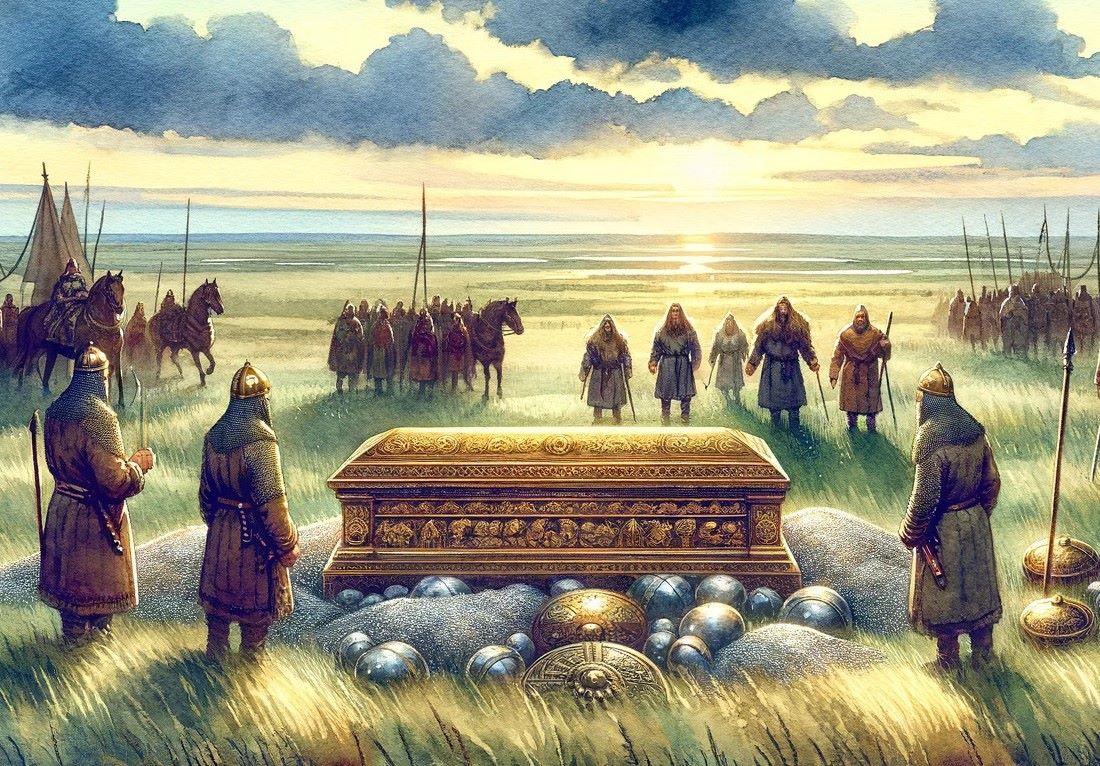Attila the Hun, one of the greatest conquerors of his time, instilled fear and awe across the vast expanse of Europe. He reigned during the early 5th century, leading the Huns from 434 to 453 AD. His death remains shrouded in mystery, with historians still debating the circumstances surrounding it. Equally enigmatic is the location of his final resting place, which has eluded discovery for centuries, fueling speculation and intrigue about the final chapter of the Hunnic king’s life.
Attila’s Tomb: Legends and Locations
The quest for Attila the Hun’s final resting place is a journey through history, veiled in legends and rich in intrigue. Jordanes, a Gothic historian, provides a compelling account of Attila’s burial in his work “Getica”:
“They lowered his body into the earth under the cover of darkness. His body was first placed in a golden coffin, then in a larger one of silver, and finally in an even larger one of iron. The iron symbolized his dominion over many peoples, the silver and gold the tribute paid to Attila by both halves of the Roman Empire.”
This elaborate burial process, emphasizing Attila’s power and the vast wealth he amassed, ignites the imagination of treasure hunters and historians alike.

Legends and theories about the location of Attila’s tomb abound, with speculation focusing on Serbia, Romania, and Hungary. In Serbia and Romania, tales persist that Attila’s final resting place might be hidden beneath the waters of the Tisza River, suggesting that the river’s course was temporarily diverted to bury the Hun king and then returned to its original path to protect the grave’s location. This theory is fueled by the desire to find the rich treasures Jordanes described, leading many amateur explorers on quests for gold that could rival the wealth of empires. Hungary, with its deep historical ties to the Huns, is rife with legends, including one that Attila’s tomb lies beneath the Hungarian plains, a secret kept for centuries. These tales, while differing in details, all reflect the enduring fascination with one of history’s most formidable leaders and the mystery that surrounds his final resting place.
Historians on Attila’s Tomb
Historians and scholars have long debated the final resting place of Attila the Hun, with various theories emerging over the centuries. The primary historical source detailing Attila’s burial comes from the Roman historian Jordanes, who claims Attila was laid to rest in a tomb rather than a riverbed. This account contradicts some modern legends that suggest a river burial. Given the nomadic traditions of the Huns and their known movements across Europe, it’s widely speculated that Attila’s tomb might be located somewhere within the vast plains of what is now Hungary. This theory posits that a more secluded and strategically advantageous location would have been chosen for the burial of such a significant leader, far from the prying eyes of the subjugated Germanic tribes and the borders of the Roman Empire.

Despite extensive historical interest and numerous searches, Attila’s grave has yet to be definitively located or identified. The passage of time, along with changes in the landscape and the secretive nature of the burial—as described by Jordanes, involving the execution of those who buried the Hunnic king to keep the site a secret—have compounded the mystery. As such, the burial site of one of history’s most formidable conquerors remains lost to time, sparking imagination and continuing research into where it might ultimately be found.
Historical Challenge: Can You Conquer the Past?
Answer more than 18 questions correctly, and you will win a copy of History Chronicles Magazine Vol 1! Take our interactive history quiz now and put your knowledge to the test!

